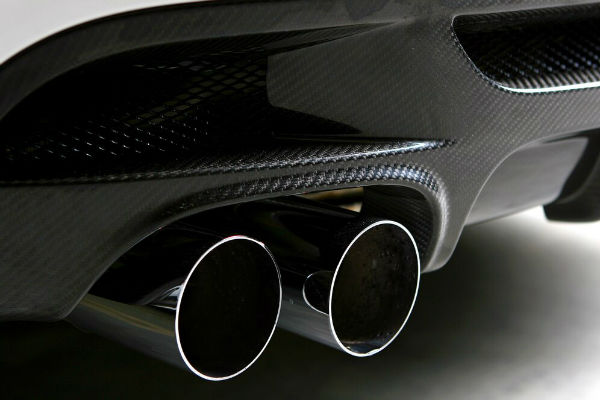Catalytic Converters vs Diesel Particulate Filter
Catalytic converters (cats) and diesel particulate filters (DPFs) are essential to automobile emissions management. They play a significant role in reducing the environmental effect of vehicle exhaust. Understanding the distinctions between these crucial components is critical for car owners and environmental activists. This article will explain the distinct qualities and functions of DPF filter diesel and cats. Moreover, we will show how these help reduce emissions from gasoline- and diesel-powered cars.
Why Are They Important?
Catalytic converters and diesel particulate filters (DPFs) make our planet cleaner, and healthier. They work in cars, trucks, and other vehicles to reduce the pollution from their exhaust. Catalytic converters in gasoline cars change harmful emissions into less harmful ones. DPFs in diesels trap tiny particles to keep them out of the air. These devices help us follow environmental rules and contribute to a cleaner future. They improve the air we breathe and public health.
How Do They Work?
Now that we briefly understand what these parts do, let’s closely examine their processes.
Catalytic Converters
Catalytic converters are crucial in cleaning up a car’s exhaust emissions. These devices use chemical reactions to transform harmful substances present in exhaust gasses. Some of these include:
- Carbon monoxide
- Nitric oxide
- Nitrogen dioxide
- Hydrocarbons
It makes them into less harmful compounds like carbon dioxide and water vapor. There are different types of catalytic converters. ‘Two-way’ oxidation for converting carbon monoxide and hydrocarbons into carbon dioxide, and water. You can also find more advanced ‘three-way’ cats. These are common in modern vehicles, reducing nitric oxide and nitrogen dioxide emissions.
DPFs
A DPF is a crucial component in the exhaust system of diesel vehicles, capturing and retaining particulate matter like soot or ash. Typically, DPFs use a ceramic honeycomb structure. To reduce emissions effectively, DPFs accumulate and temporarily store exhaust soot. They need periodic regeneration. This involves burning off excess soot to prevent harmful emissions and black smoke during acceleration in diesel vehicles. Soot accumulates gradually as exhaust gasses pass through the filter.
As the exhaust temperature rises, the soot turns into ash and is expelled in a process known as ‘regeneration’. This usually occurs at speeds above 40 mph or when the engine artificially raises exhaust temperatures every 300 miles. Newer car models, especially those from 2015 onward, may use a Selective Catalytic Reduction (SCR) system. This system employs a liquid solution called AdBlue. AdBlue is a mixture of water and urea, which triggers a chemical reaction in the exhaust system. This reaction converts nitrogen oxides into water and nitrogen. Thus reducing harmful exhaust emissions significantly.
Challenges
Both systems have their benefits and contribute to a greener future. Yet, they aren’t perfect. Let’s look at some of the challenges associated with both of them. Thieves often target cats due to the valuable precious metals they contain, such as platinum, rhodium, and palladium, which hold significant worth for metal dealers. Moreover, they can malfunction, causing issues like:
- Worse performance
- Bad acceleration
- Excessive exhaust smoke
- Bad odors
- Extreme heat beneath the vehicle
Some of these symptoms can also stem from issues in other parts of the emissions system. Thus, it’s a must to have a mechanic diagnose the problem when considering a catalytic converter replacement. Sticking to your vehicle’s recommended maintenance schedule can extend the lifespan of your catalytic converter. Some often surpass the 10-year mark. Ensuring the proper upkeep of your exhaust, emissions, and combustion systems reduces the risk of premature catalytic converter failure. Lastly, the check engine light should never be disregarded. Catalytic converter damage ranks high on the list of car maintenance concerns. It could warn of problems like a clogged air or fuel filter.
On the other hand, DPF issues are a common concern in many vehicles. Typically, the DPF initiates a regeneration process to clear its filter. Yet, this only occurs during extended high-speed driving, such as on a motorway. If you primarily use your diesel vehicle for short trips, you’ll likely encounter a clogged DPF. When a DPF gets blocked, the usual regeneration cycle may not suffice. This means it can’t unclog the filter due to the accumulation of soot and particulates. A DPF blockage can result from various factors, including:
- Sensor failure
- Residues in the exhaust gas recirculation system
- Age or mileage
- Faulty fuel injector
- Poor-quality fuel
- Split intercooler pipes/hoses
Some vehicles are marketed with DPFs claimed to last the vehicle’s lifetime. Yet, real-world experience shows that regular cleaning and maintenance are necessary. Not only for the DPF but for any other filter, too.
Conclusion: Catalytic converters and DPFs are vital in reducing vehicle emissions for a cleaner environment. They each have their challenges. Cats can malfunction and are a common target for thieves. DPFs, on the other hand, get clogged in short-trip diesel vehicles. Regular maintenance is crucial for both. These components emphasize the importance of responsible vehicle care. They reduce harmful emissions and help for a greener future.
